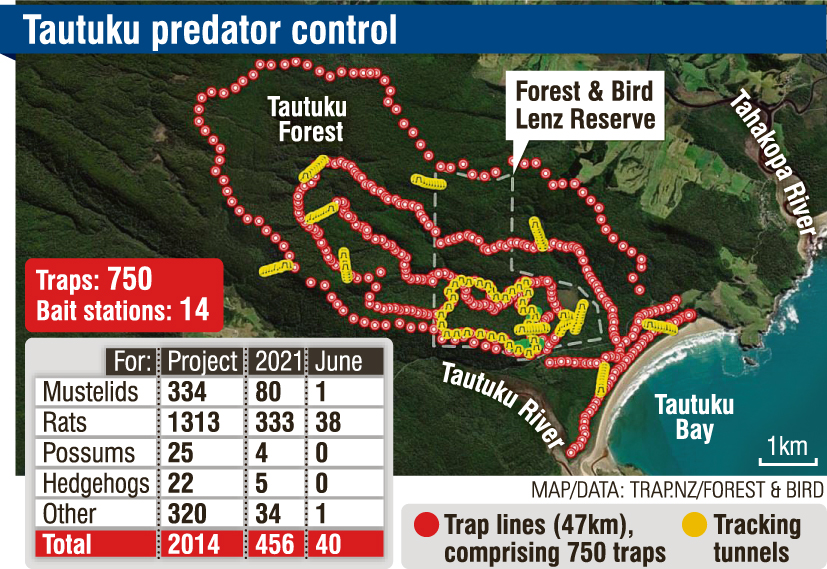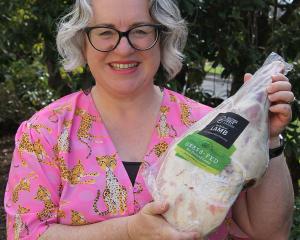
The Tautuku Restoration Project has been running near Papatowai in the Catlins for the past five years, and on Monday reached 2000 predators trapped in its extensive network of trap lines.
The project, run by Forest & Bird and partially funded by Doc, aims to to control pests and expand biodiversity throughout the entire Tautuku Basin, which covers about 6600ha.
Dunedin Forest & Bird project manager Francesca Cunninghame said about 47km of trap lines had been laid both during and preceding the project, covering about 3000ha of the catchment.

Although she and project volunteers were pleased to reach the milestone, much remained to be done.
"Although the numbers are important, from our perspective we want to know what effect it’s having protecting what we want to protect.
"Unfortunately, pigs and deer remain an appallingly destructive issue for the forest, and are not trapped by our current efforts aimed at smaller predators. So our contractor Gavin White has been doing amazing work testing traps for those animals, and we also have hunters from Invercargill who help out.
"By continuing to study the impact of our efforts on the native species we’ve identified as significant, we can inform our future predator control."
First recorded in 2018, the Tautuku gecko remained one such species although, due to its secretive nature, populations remained difficult to assess accurately, she said.
Other species found in the catchment included kakariki, kaka, rifleman and galaxiids.
Three sightings of the Australasian bittern were an exciting, more recent, development, she said.
"We’ve been very excited to see this wetland bird, but it’s still not clear whether it’s visiting or established locally. We’ll be using new bat and bittern monitors to see what we can discover."
The bats in question are New Zealand long-tailed bats, known to be present elsewhere in the Catlins, but an unknown quantity at Tautuku.
"We’ve found a couple of remnant populations in the wider catchment, one of which sits outside current predator control measures. So the monitors and further trap lines will help with assessment and conservation."
South Otago Forest & Bird volunteer Roy Johnstone said he felt the group was "winning the battle" against predators.
"Our lines are based on the philosophy of catching what’s in the main catchment, then establishing buffer zones to prevent reinvasion. My gut feeling is the predator numbers remaining are not huge.
"It’s the biggest area of native bush remaining on the east of the South Island, so it’s worth every scrap of effort."











